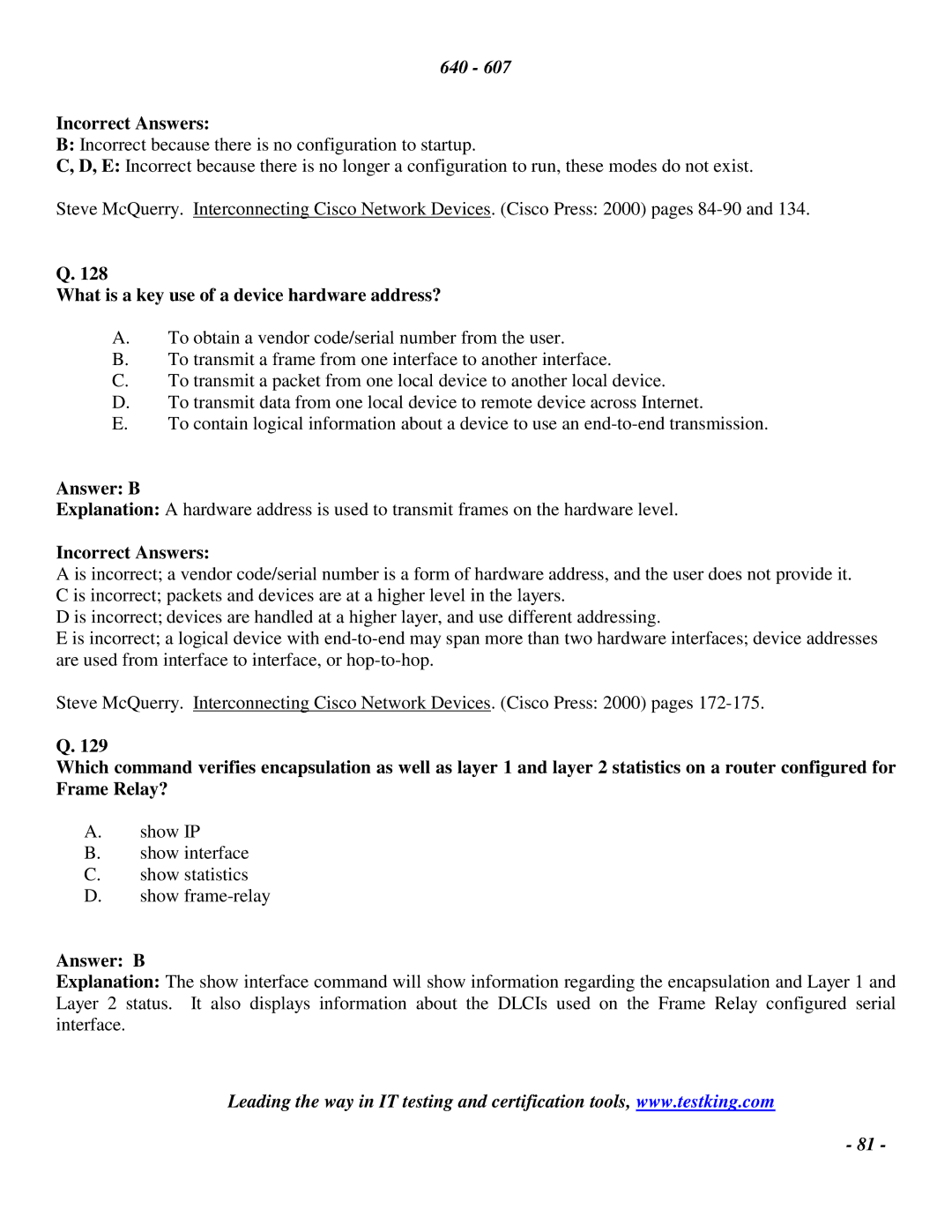640 - 607
Incorrect Answers:
B:Incorrect because there is no configuration to startup.
C, D, E: Incorrect because there is no longer a configuration to run, these modes do not exist.
Steve McQuerry. Interconnecting Cisco Network Devices. (Cisco Press: 2000) pages
Q. 128
What is a key use of a device hardware address?
A.To obtain a vendor code/serial number from the user.
B.To transmit a frame from one interface to another interface.
C.To transmit a packet from one local device to another local device.
D.To transmit data from one local device to remote device across Internet.
E.To contain logical information about a device to use an
Answer: B
Explanation: A hardware address is used to transmit frames on the hardware level.
Incorrect Answers:
A is incorrect; a vendor code/serial number is a form of hardware address, and the user does not provide it. C is incorrect; packets and devices are at a higher level in the layers.
D is incorrect; devices are handled at a higher layer, and use different addressing.
E is incorrect; a logical device with
Steve McQuerry. Interconnecting Cisco Network Devices. (Cisco Press: 2000) pages
Q. 129
Which command verifies encapsulation as well as layer 1 and layer 2 statistics on a router configured for Frame Relay?
A.show IP
B.show interface
C.show statistics
D.show
Answer: B
Explanation: The show interface command will show information regarding the encapsulation and Layer 1 and Layer 2 status. It also displays information about the DLCIs used on the Frame Relay configured serial interface.
Leading the way in IT testing and certification tools, www.testking.com
- 81 -
